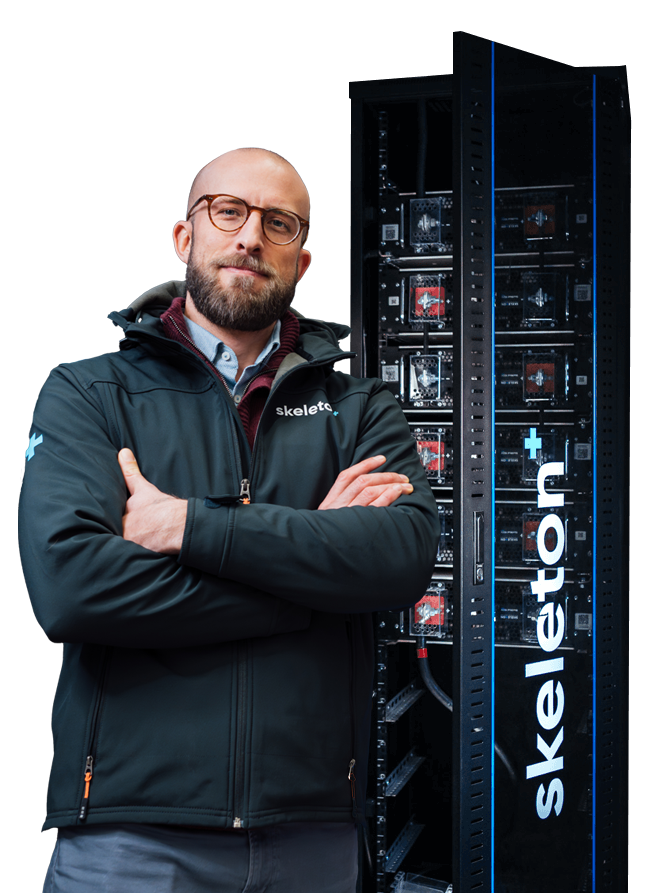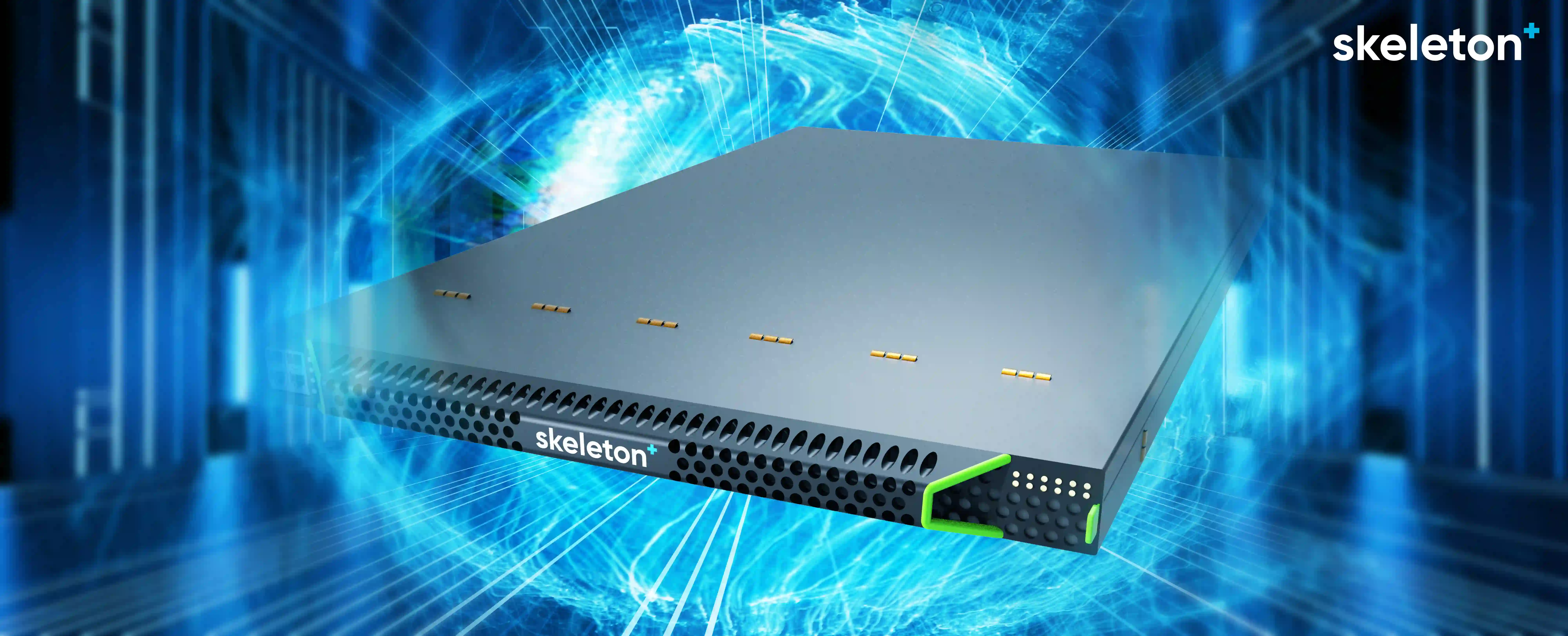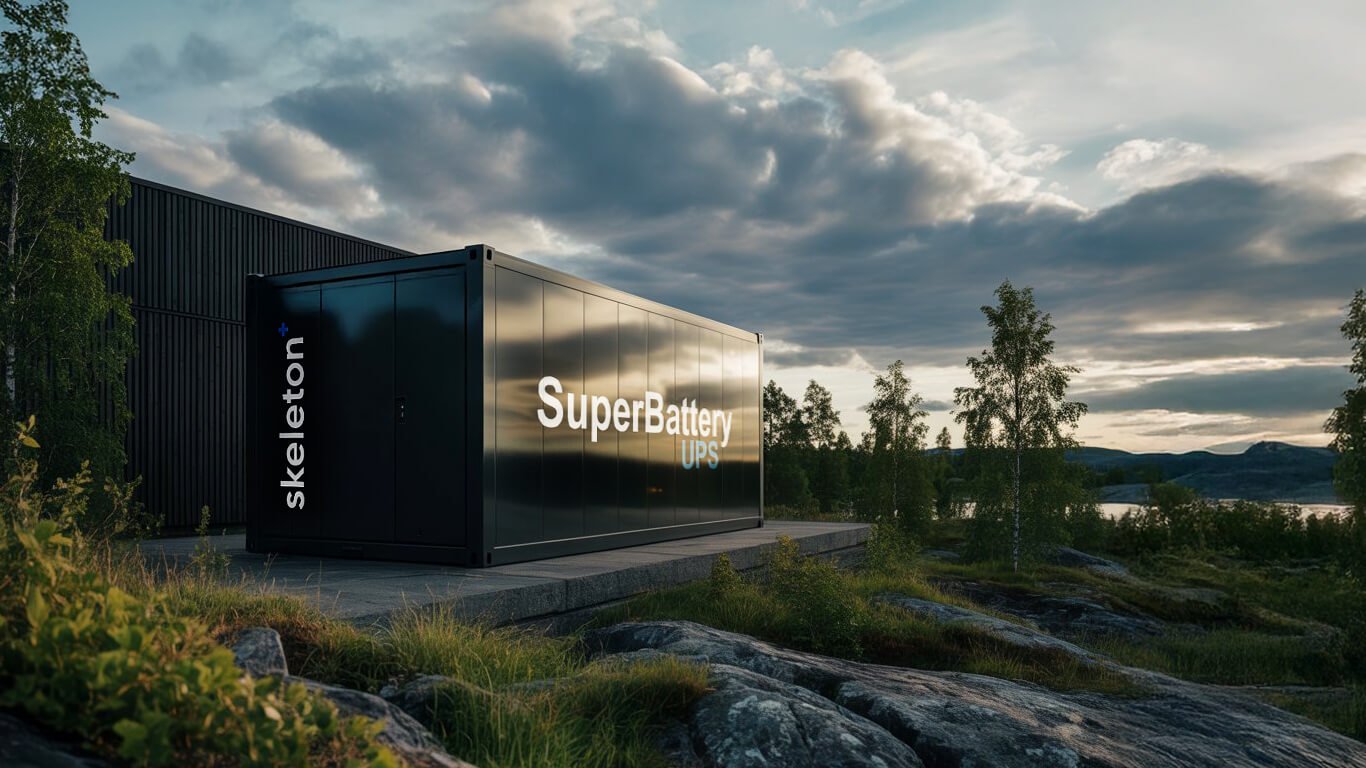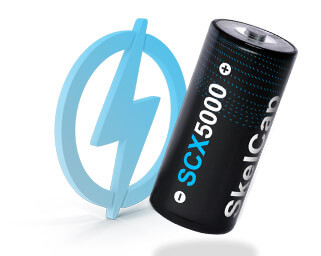
Supercapacitors Can Significantly Reduce Costs and Improve Train Efficiency
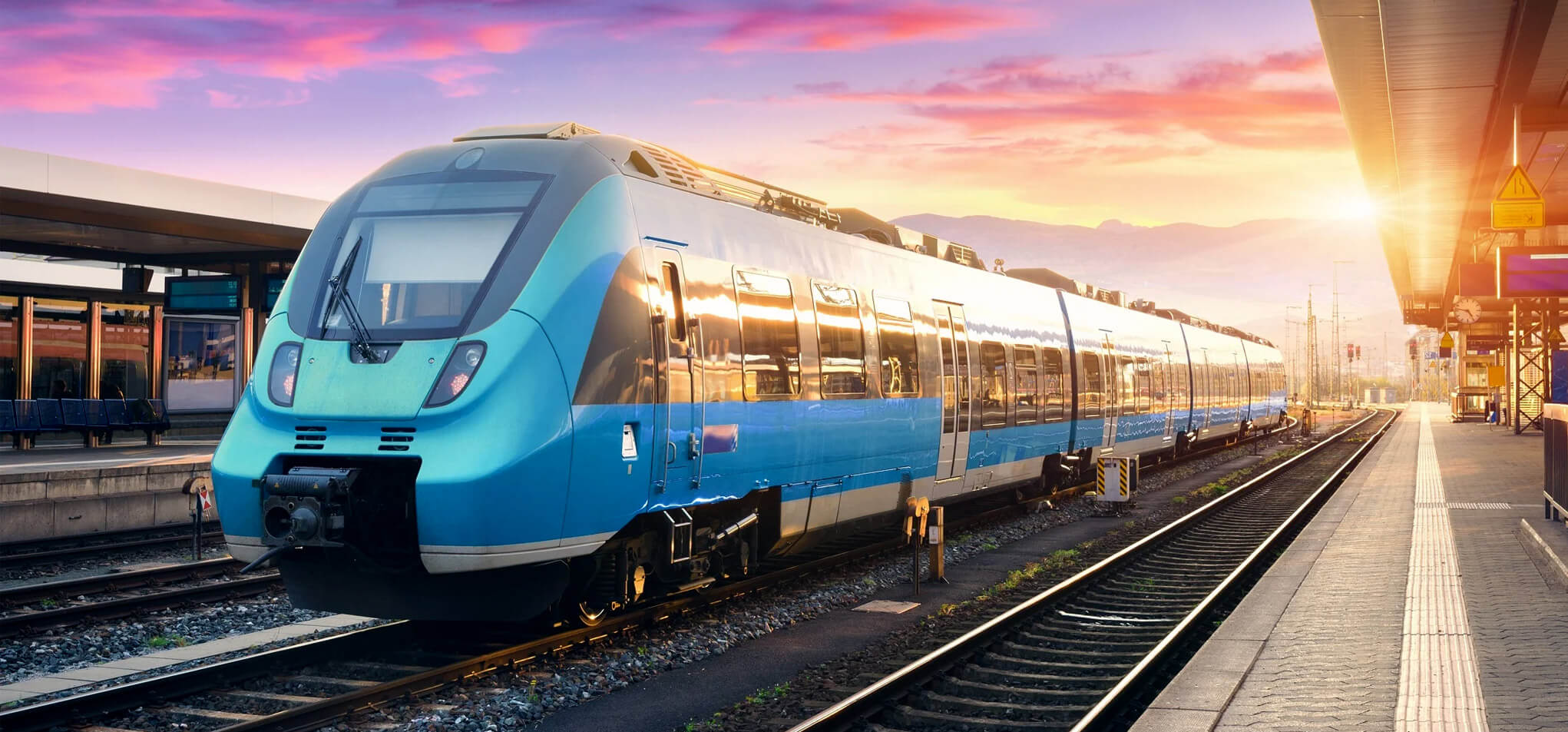
Ultracapacitors have the potential to revolutionize the rail industry. Our technology can significantly improve train efficiency - reduce costs and CO2 emissions, increase energy savings and dynamics of the train. The implementation of ultracapacitor technology provides effective voltage stabilization for rail systems, greatly improves the performance of propulsion for light rail vehicles and significantly advances the locomotive engine starting technologies. At Skeleton Technologies, we offer four different solutions to improve train efficiency.
Kinetic Energy Recovery System (KERS) for DMU Trains
Many railway companies are still using DMU (diesel multiple units) trains without any form of energy regeneration. It can result in penalties related to high CO2 emissions, high running and maintenance costs, and heavy wear on brakes and transmission components. Skeleton Technologies is offering KERS (Kinetic Energy Recovery System), an on-board energy storage system, powered by our industry-leading ultracapacitors, which capture braking energy in trains to power acceleration and decrease carbon emissions.
Kinetic Energy Recovery System can save you tens of thousands of euros per year. Trains can recover up to 20% of electricity depending on whether the train is used as a long-distance train or a full-stop commuter train. Energy recuperation can have a global impact considering how many thousands of tons of people and cargo are moved by rail every day. Implementation of this system results in improved fuel efficiency, reduced CO2 emissions, faster train acceleration, and less noise. Moreover, onboard energy storage can be sized to provide enough electric range to pass “non-diesel” areas, increasing the utilization of the train.
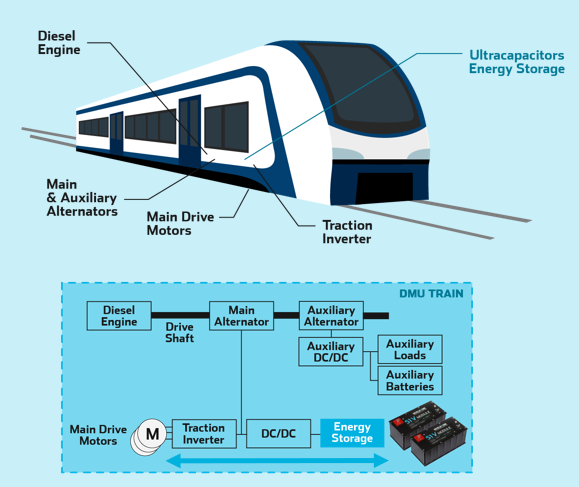
On-board energy storage can be sized to provide enough electric range to pass “non-diesel” areas, increasing the utilization of the train.
Engine Starting for DEMU Trains
Safety and reliability matter especially in extreme weather conditions of -40 °C. Sometimes transportation companies face situations when DEMU train fails to start, which results in very costly downtime. The main reason why equipment fails to start is the use of lead-acid batteries as power packs to get started. With Skeleton’s SkelStart Engine Start Modules (ESM), which have the power density matching the requirements of starting procedure, transportation companies will never face battery-related start failures.
Compared to a typical lead-acid battery starting system, the space requirements for an ultracapacitor engine starting system are significantly smaller. Skeleton Technologies' ESM module is ideally suited for starting diesel train generators, and solve the problem of space by providing all the power necessary while taking up 6 X less space at about 30 X lower weight than lead-acid batteries, making it an easy retrofit solution.
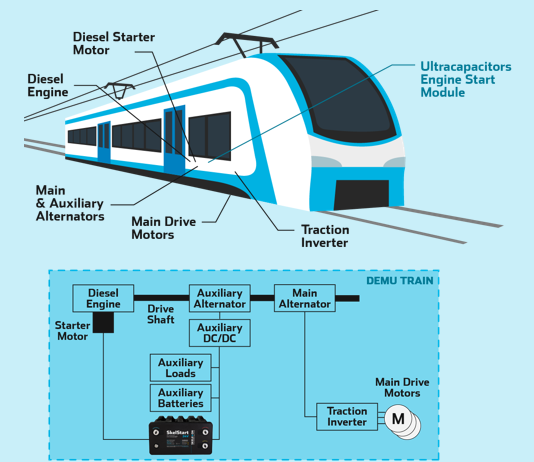
Skeleton Technologies’ ESM ultracapacitor module provides the necessary power density to start the engine even at -40 °C
Catenary-Free Operation with an On-Board Energy Storage
Sometimes the catenary is not entirely available for the planned route due to limitations regarding preservation orders in certain city quarters. In this case, onboard energy storage could be a perfect solution, providing energy in track sections without a catenary. This application has several significant advantages. Firstly, no catenary-related constructions are needed – implementation is fast and easy due to the compact onboard energy storage system design. And secondly, lower public grid connection costs and increased energy efficiency, as energy is being regenerated when the train is braking.
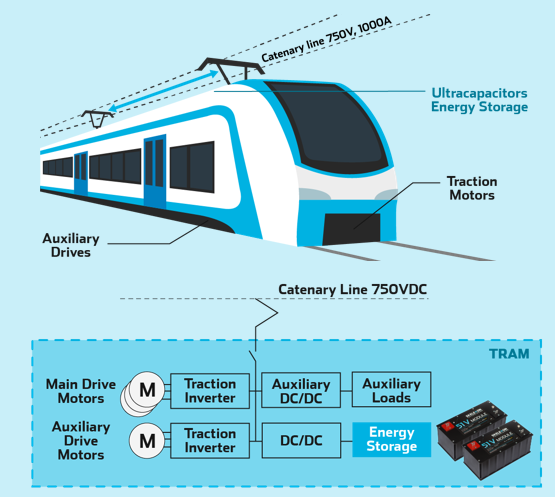
Compact on-board energy storage provides energy in track sections without catenary
Wayside Energy Storage
Most catenary systems are not capable of feeding energy back to the grid. With our solution the excess of energy is being saved to the wayside energy storage, installed at several train stations. When train accelerates, it draws the energy from ultracapacitors.
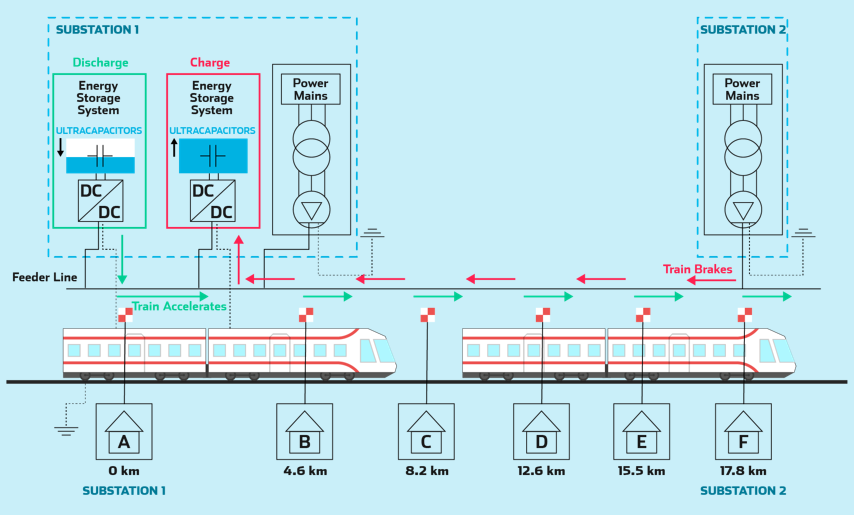
Implementation of this solution can result in 1490 MWh saved energy per year
Fast Charging in Seconds
Fast charging in seconds is available both for onboard and wayside energy storage solutions. It provides fast charging of light rail vehicles within seconds. The energy storage absorbs energy and supplies the vehicle with enough energy to reach the next couple of stations.
